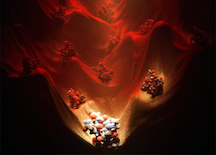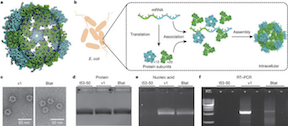Recent Science and Nature publications. Congrats!
Message boards : News : Recent Science and Nature publications. Congrats!
| Author | Message |
|---|---|
|
Admin Project administrator Send message Joined: 1 Jul 05 Posts: 5146 Credit: 0 RAC: 0 |
Two research publications were released last week in Science and Nature. The Science publication describes work which relied on computations from Rosetta@home most of which were from Android devices. The Nature publication did not directly use Rosetta@home due to the large size of the designs but used Rosetta. Congrats and thank you for your contributions!  Comprehensive computational design of ordered peptide macrocycles. As described in the abstract, macrocyclic peptides composed of l- and d-amino acids were designed by near-exhaustive backbone sampling followed by sequence design and energy landscape calculations. More than 200 designs were predicted to fold into single stable structures, many times more than the number of currently available unbound peptide macrocycle structures. Nuclear magnetic resonance structures of 9 of 12 designed 7- to 10-residue macrocycles, and three 11- to 14-residue bicyclic designs, are close to the computational models. The results provide a nearly complete coverage of the rich space of structures possible for short peptide macrocycles and vastly increase the available starting scaffolds for both rational drug design and library selection methods. Read more from UW Medicine News. Evolution of a designed protein assembly encapsulating its own RNA genome. As described in the abstract, synthetic nucleocapsids composed of icosahedral protein assemblies with positively charged inner surfaces were computationally designed. The ability of these nucleocapsids to evolve virus-like properties by generating diversified populations and selecting for improved genome packaging and fitness against nuclease challenge was also explored. The results show that there are simple evolutionary paths through which protein assemblies can acquire virus-like genome packaging and protection. Considerable effort has been directed at ‘top-down’ modification of viruses to be safe and effective for drug delivery and vaccine applications; the ability to design synthetic nanomaterials computationally and to optimize them through evolution now enables a complementary ‘bottom-up’ approach with considerable advantages in programmability and control.  |
Message boards :
News :
Recent Science and Nature publications. Congrats!

©2026 University of Washington
https://www.bakerlab.org